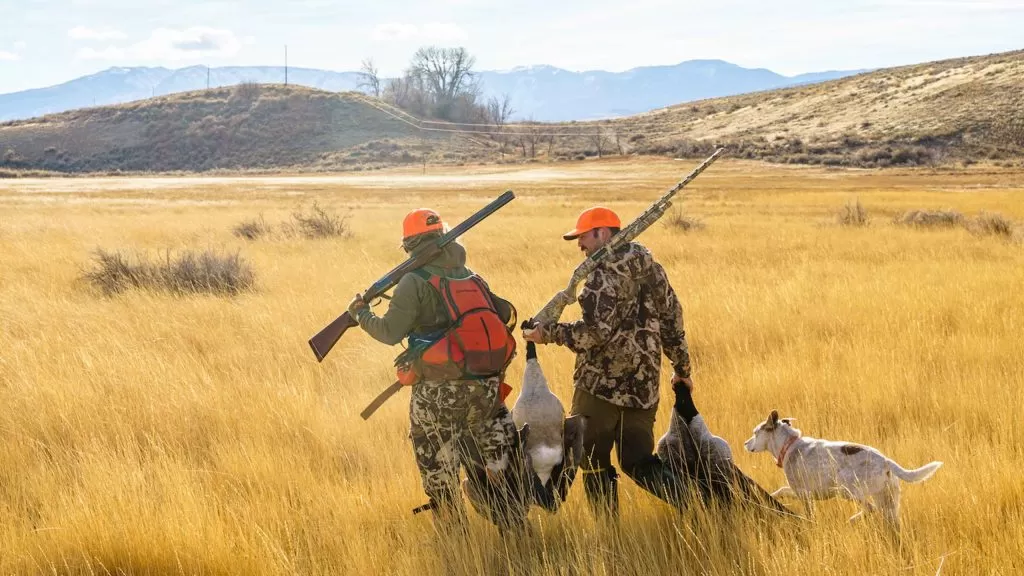Opinion: Conservation and access priorities for Wyoming sportspeople
Casper Star Tribune Letter to the Editor from several of Wyoming’s Hunting & Conservation Groups

September 18, 2022
Most Wyoming lawmakers have made it clear that they support our Second Amendment rights and our right to hunt. We the undersigned organizations believe the following actions will help lawmakers go even further in supporting wildlife, hunting and angling in the Cowboy State:
1. Keep public lands and wildlife in the public’s hands
Public lands, waters and wildlife are central to our way of life in Wyoming. Any proposal to transfer or privatize these resources is a non-starter for sportsmen and sportswomen.
2. Commit to science-based management and the North American model of wildlife conservation
Science-based management guided by the North American Model of Wildlife Conservation has proven itself as the most effective approach for recovering and sustaining wildlife populations. Decision makers can build on our conservation legacy by supporting the state agencies and dedicated biologists who manage our shared wildlife resources.
3. Open access to inaccessible public land
In Wyoming, 4 million acres of state and federal lands are surrounded by private holdings with no legal means of public access. Lawmakers should support cooperative solutions — including funding for voluntary access agreements — that respect private property rights and open access to these landlocked parcels.
4. Partner with landowners to increase access to private lands
Public-private partnerships such as Access Yes have opened over 2.6 million acres of private land to hunters and anglers in Wyoming. Lawmakers can continue to financially benefit landowners who steward wildlife habitat while providing public access by expanding funding for these programs.
5. Lead the fight against wildlife diseases
Wyoming’s robust big game populations and the hunting opportunities they provide are threatened by the spread of wildlife diseases such as pneumonia in bighorn sheep and chronic wasting disease in elk and deer. To address these issues head on, wildlife managers need support and funding from lawmakers.
6. Conserve big game migration corridors and winter range
Migration corridors and winter range support wildlife abundance that maximizes hunting opportunities and supports our rich outdoor heritage. Wyoming Game and Fish needs the tools necessary to conserve these habitats on public lands while also providing financial incentives to landowners to voluntarily conserve key habitats on private lands.
7. Invest in habitat improvement and conservation/stewardship
Wyomingites recognize that many of our best wildlife habitats need continued investment in on-the-ground stewardship work, such as habitat restoration and invasive weed control. Continuing to expand and support state programs such as the Wildlife and Natural Resource Trust will secure essential funding for these projects, while improving access to federal matching grants: a win-win for Wyoming’s fish and wildlife.
8. Recover pronghorn populations by conserving and restoring sagebrush ecosystems
Wyoming’s pronghorn populations are declining, as are hunting opportunities. Supporting science-based management and policies that conserve the sagebrush ecosystem will help recover pronghorn and support other species, including greater sage grouse and mule deer.
9. Expand state land conservation and stewardship
4.2 million acres of state trust land in Wyoming provide important wildlife habitat and opportunities for outdoor recreation, including hunting and fishing. By utilizing wildlife friendly options to generate revenue in appropriate areas — such as conservation leasing — decisionmakers can support public education and steward the landscapes and wildlife that drive tourism and outdoor recreation, Wyoming’s second largest economic sector.
10. Support multiple use and sustained yield
Multiple-use management includes resource extraction, habitat stewardship, and outdoor recreation. Sportsmen and sportswomen support the balanced use of our public lands — which includes both responsible development and the conservation of our natural resources — so that future generations can experience the same opportunities we enjoy today.
